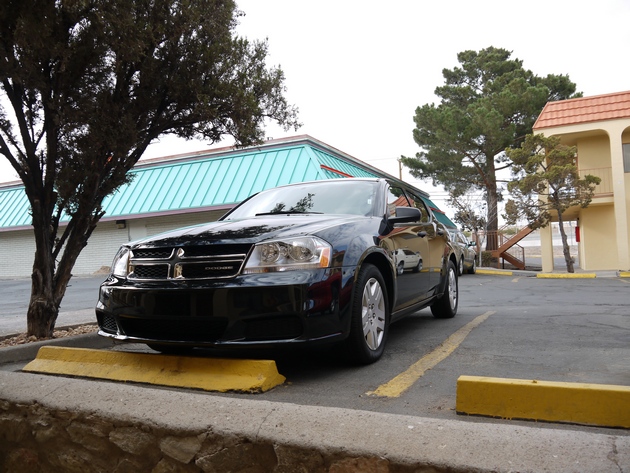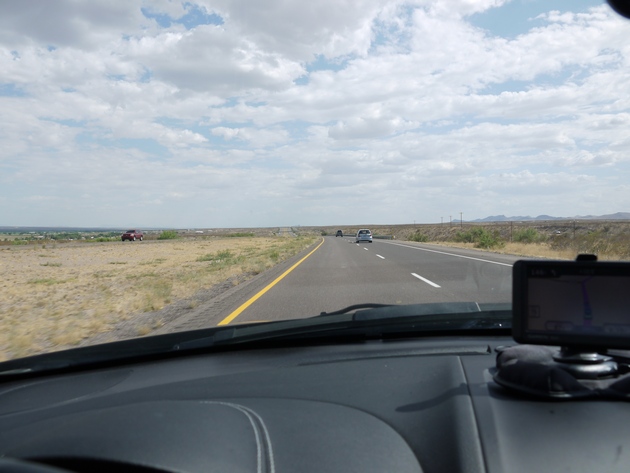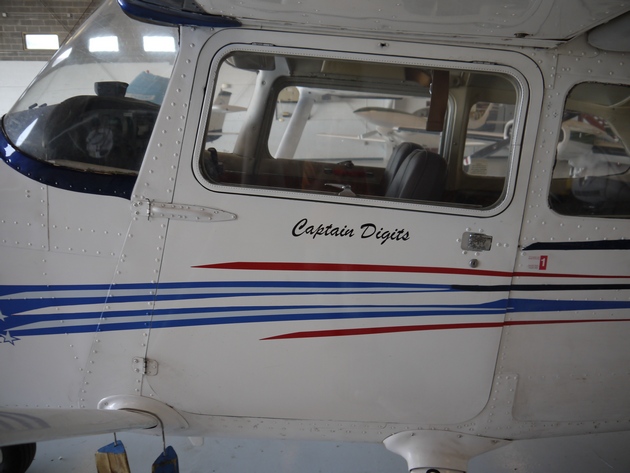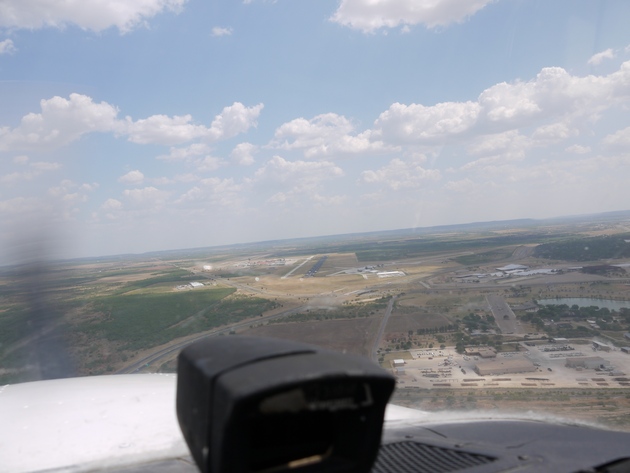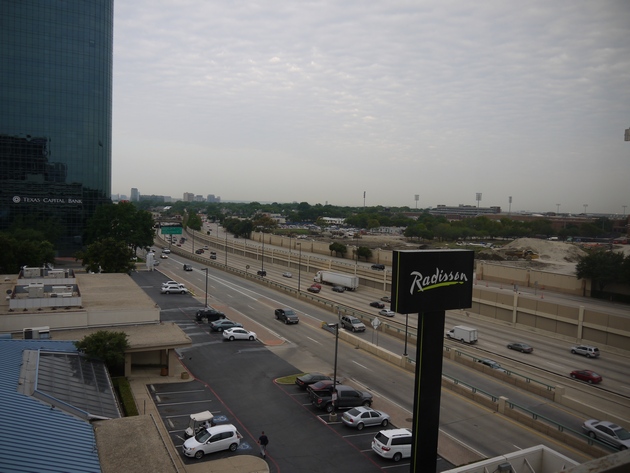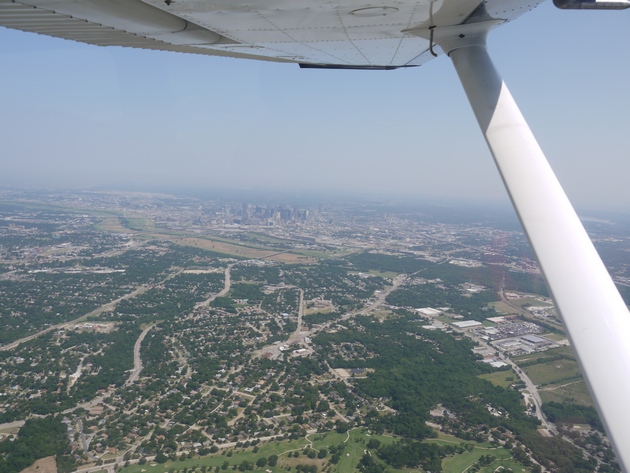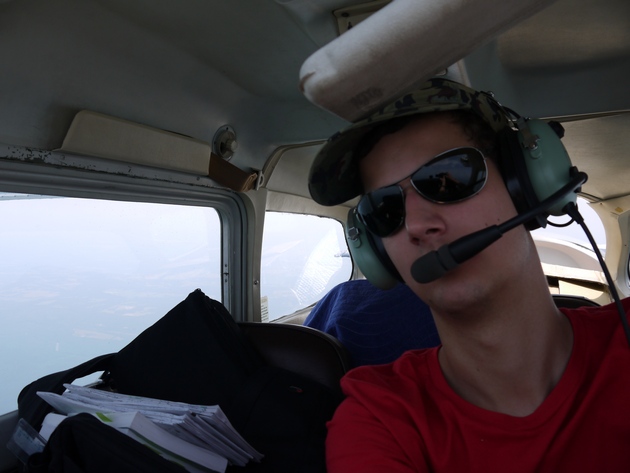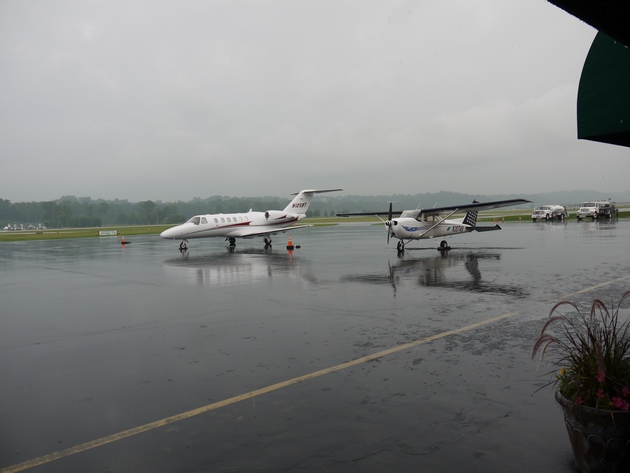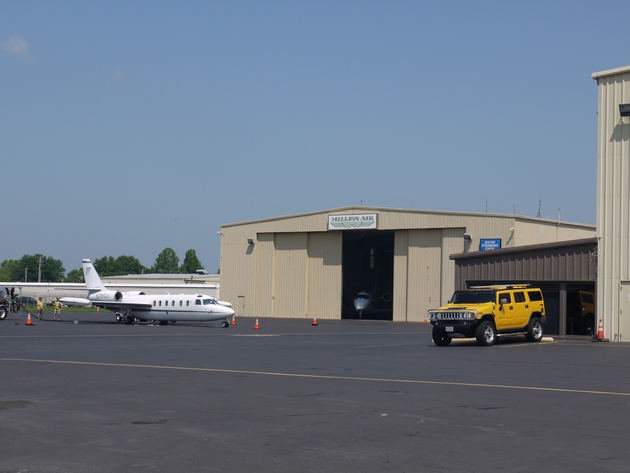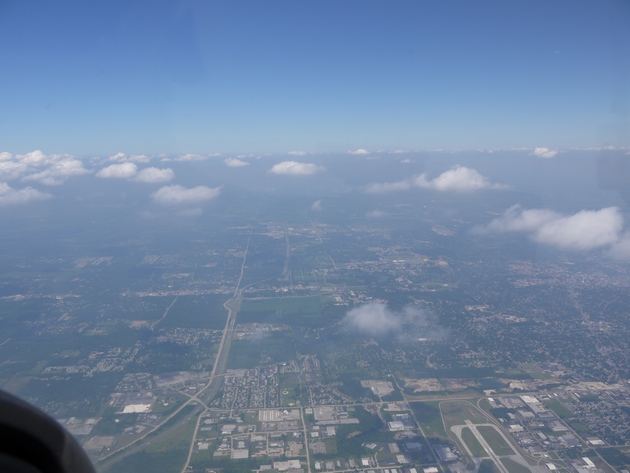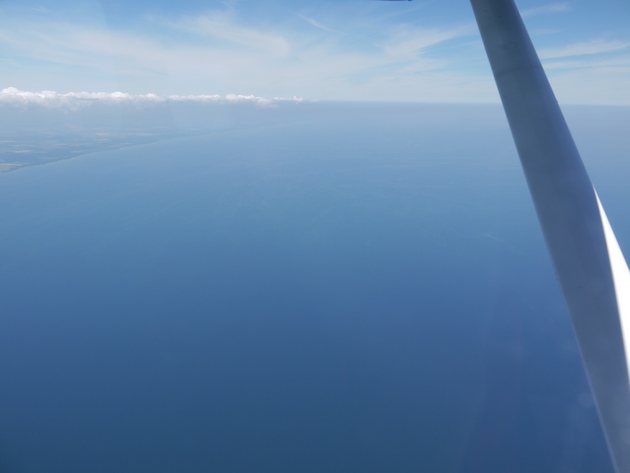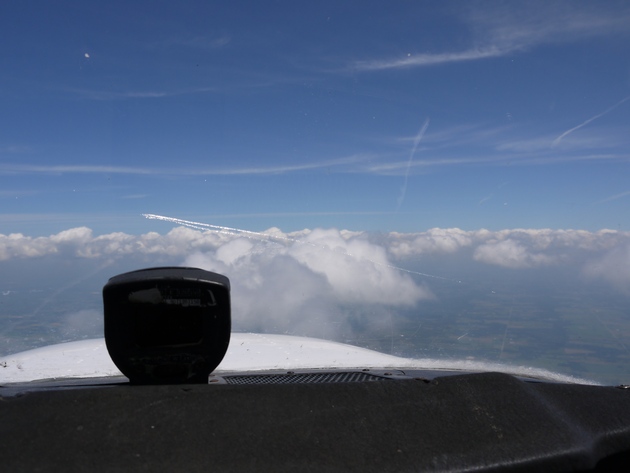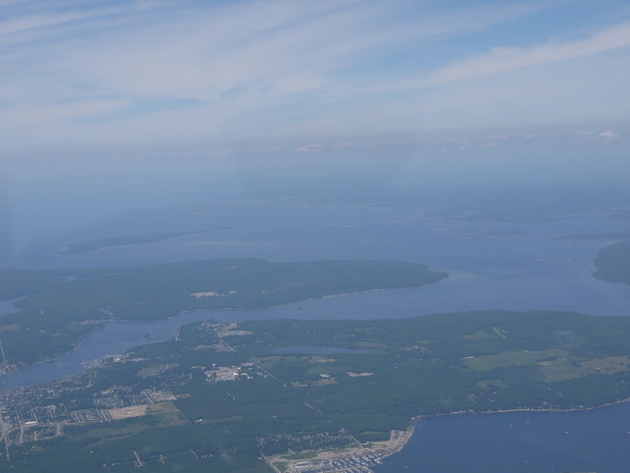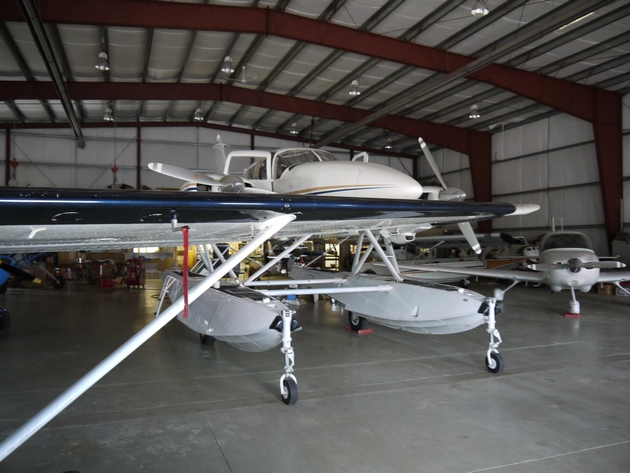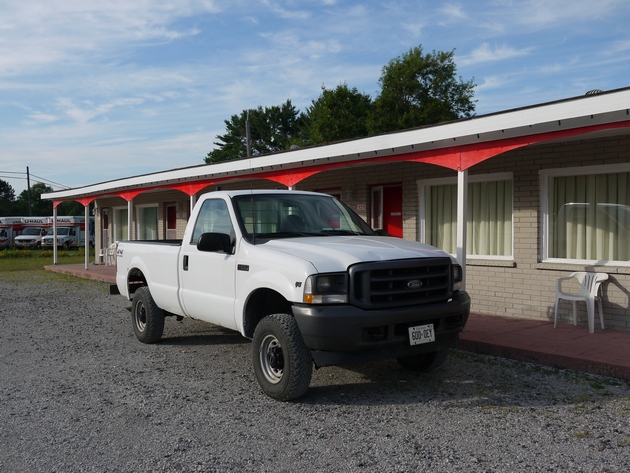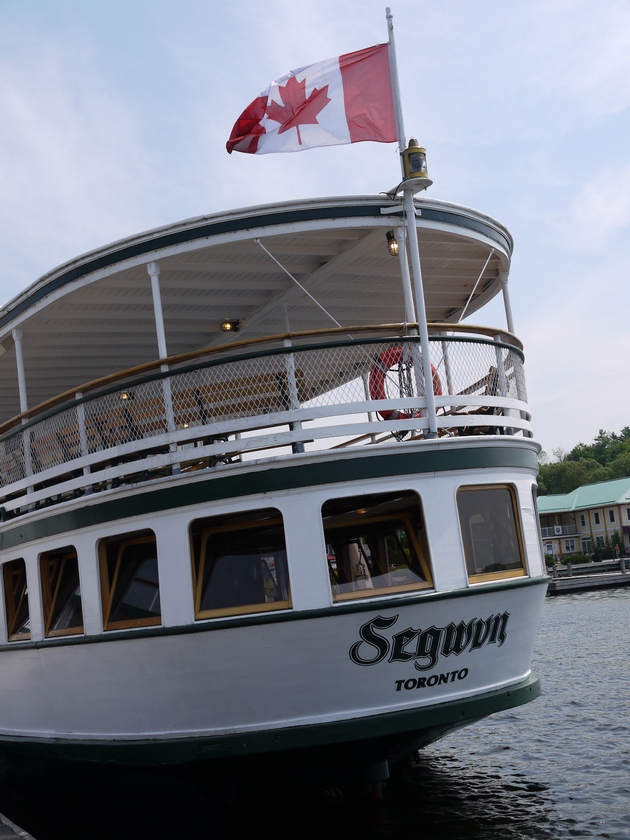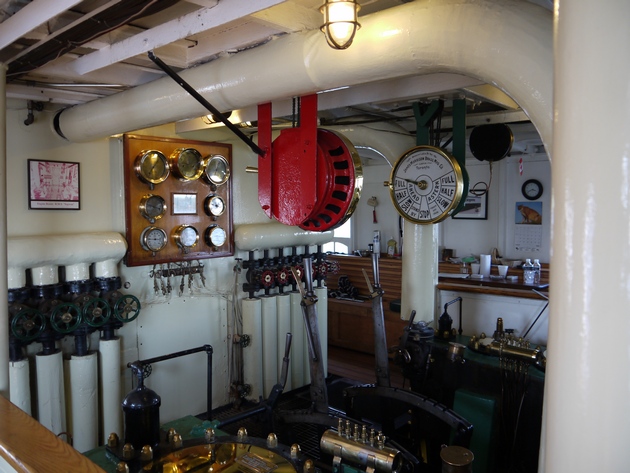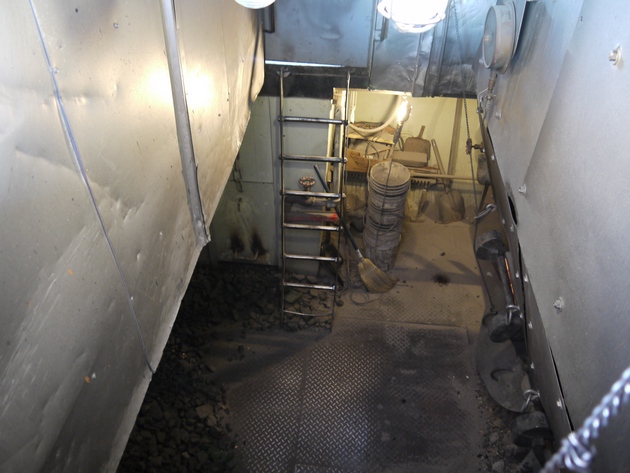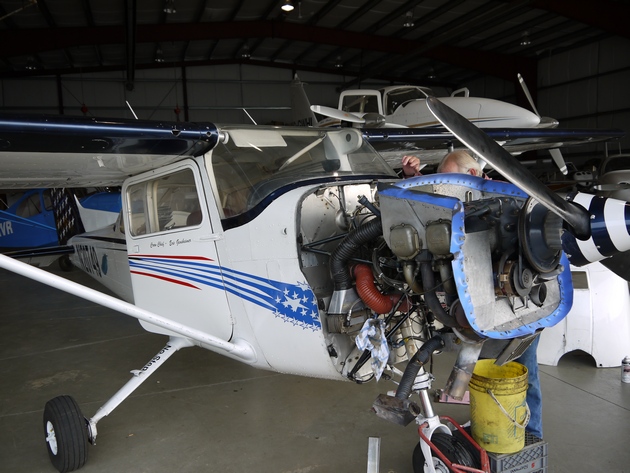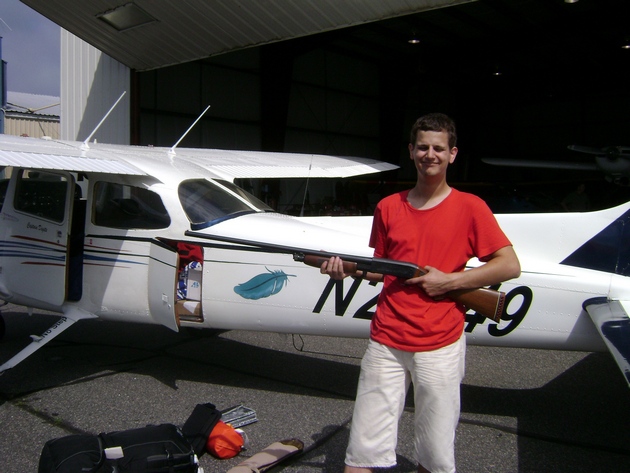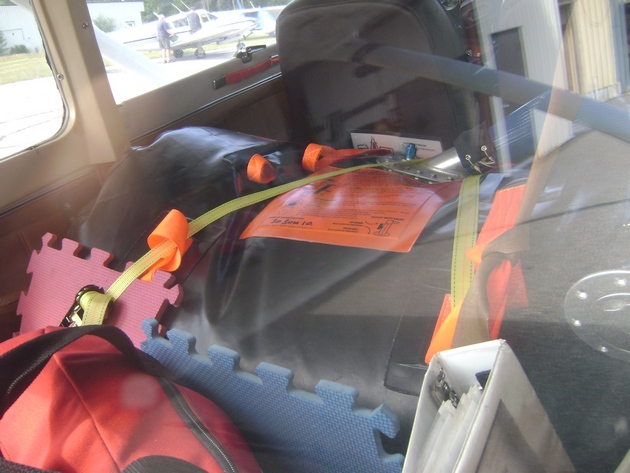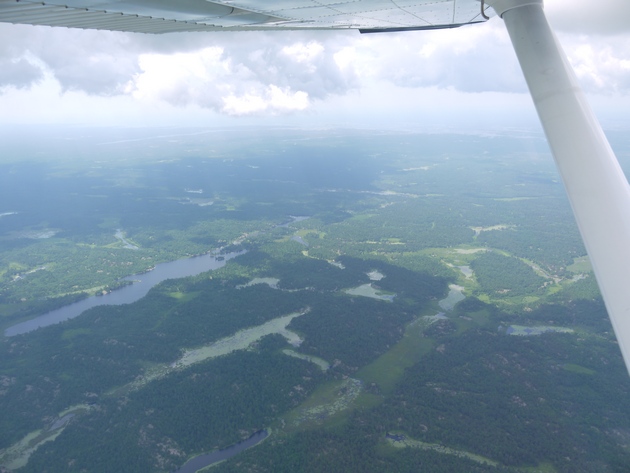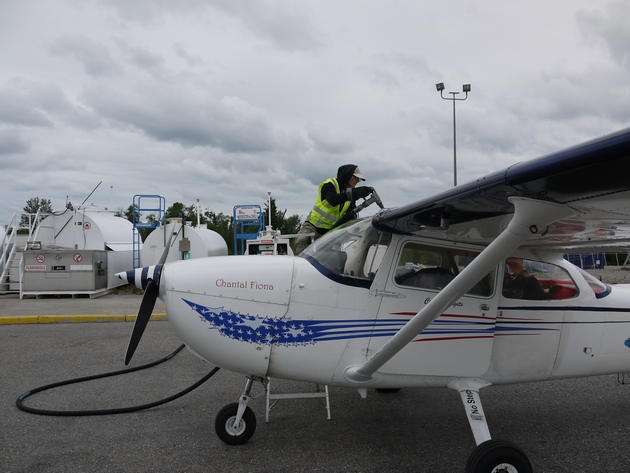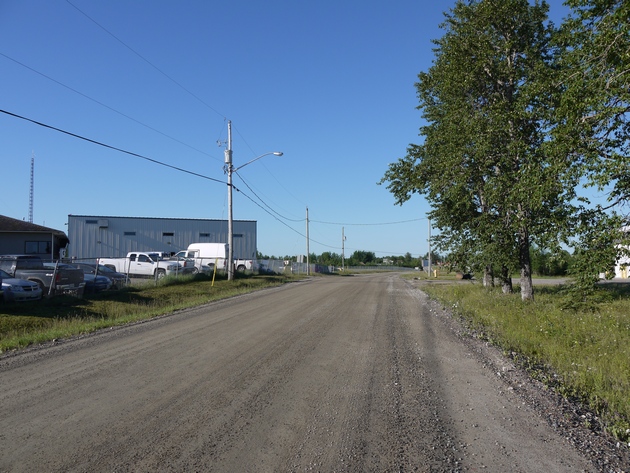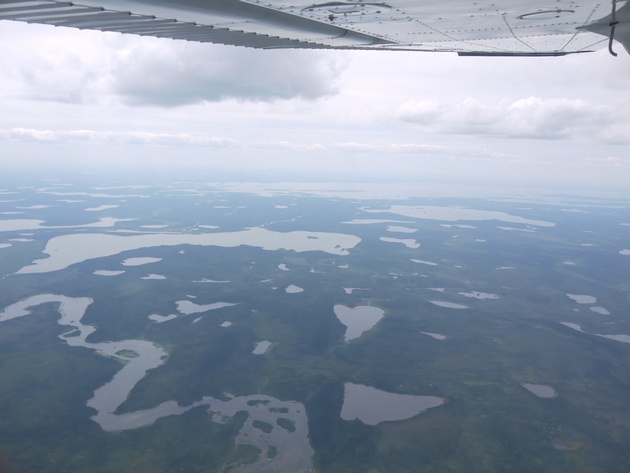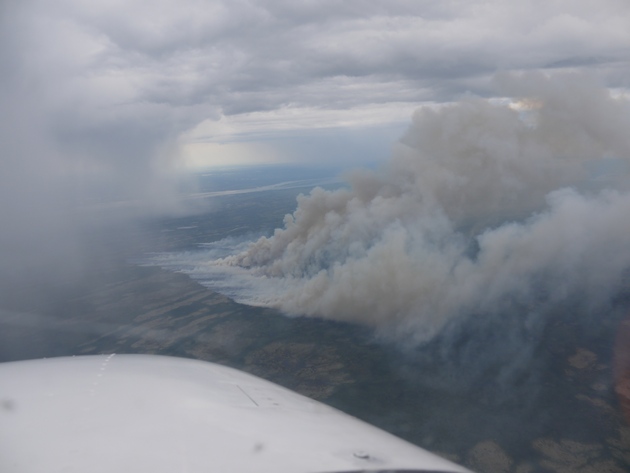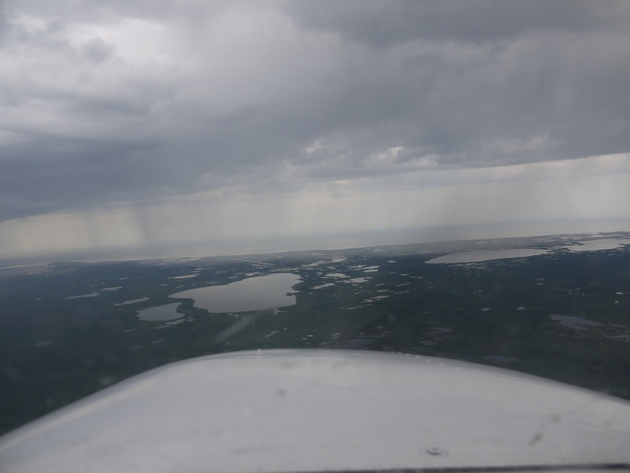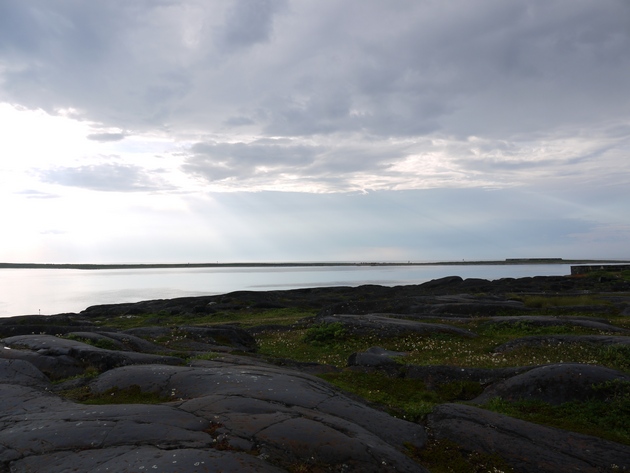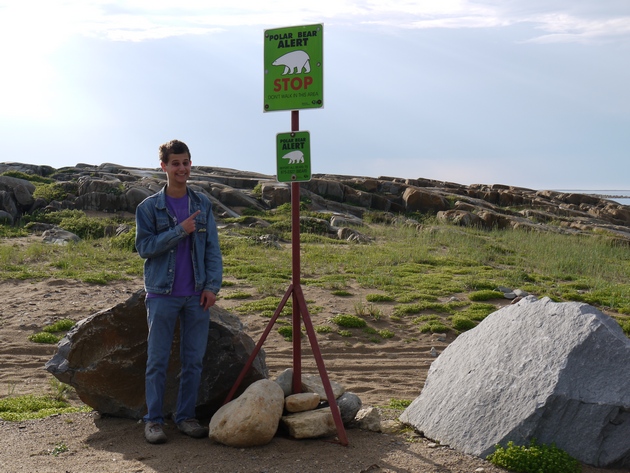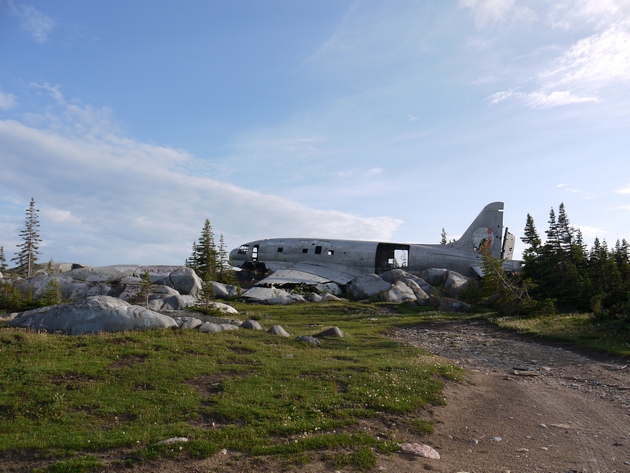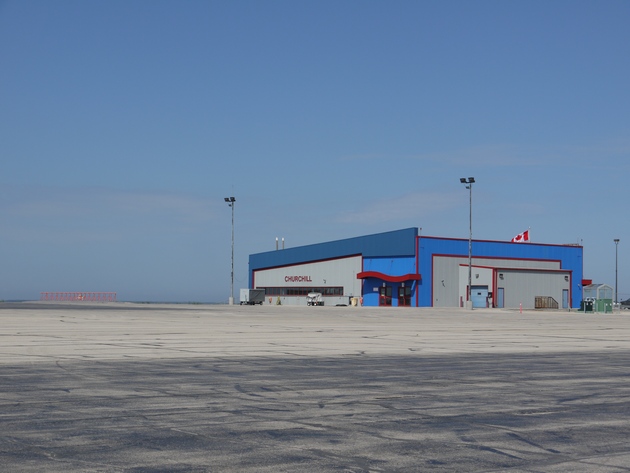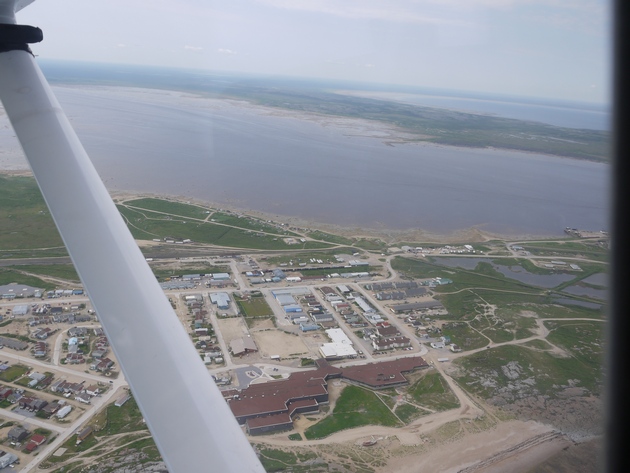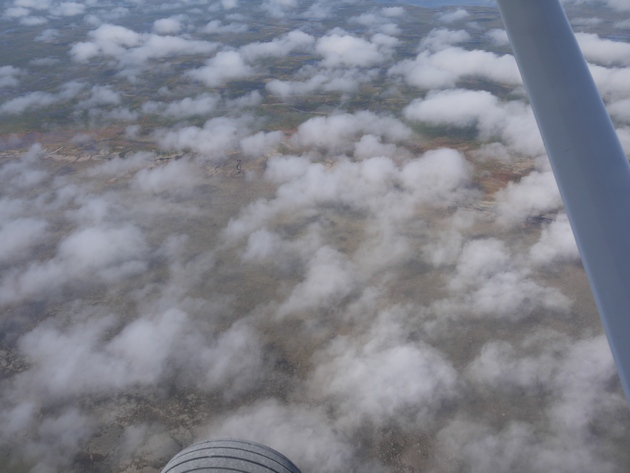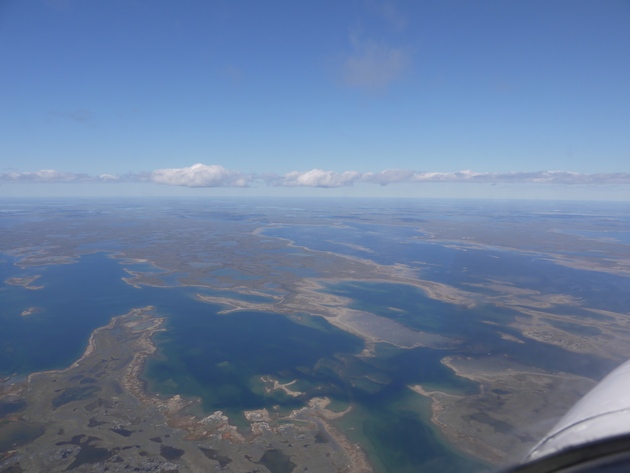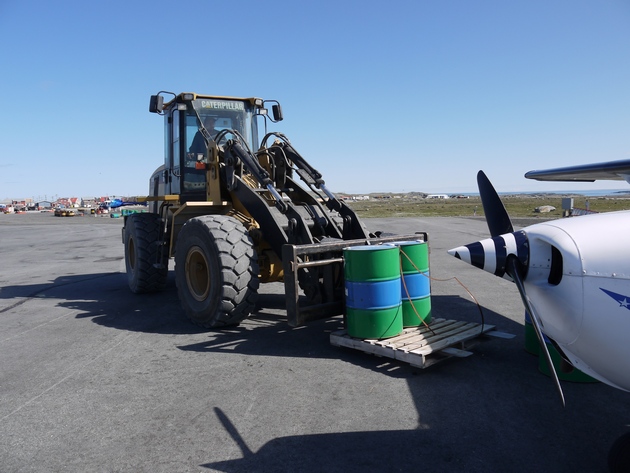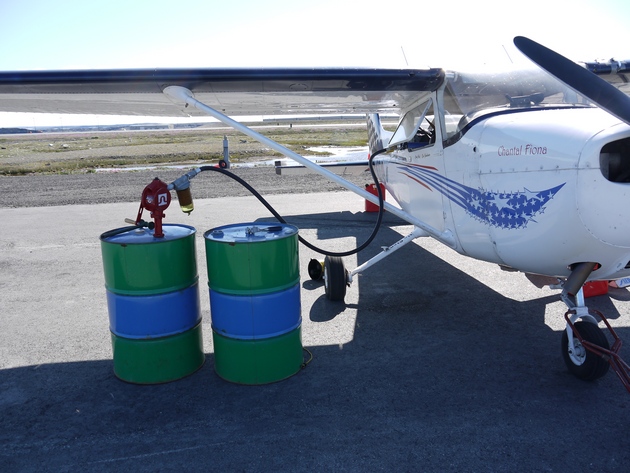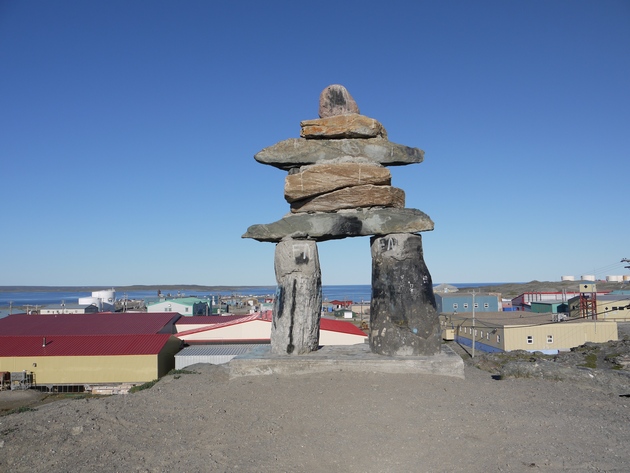Hallo iedereen,
na een jaartje stil gezeten te hebben, is het tijd voor nog eens een verhaaltje. Aangezien ik de link zal doormailen naar enkele mensen die enkel Engels spreken, zal het terug een Engelstalig geschreven verslag zijn. Gelukkig heeft iedereen een ELP level 6, zodat dit geen probleem mag opleveren.
--------------------------------------------------------------
Previously on Digits’ flying adventures…
The last landing was a smooth one and while we were taxiing to the hanger, we saw that the airport was closing right behind us. The engine was shut down. We were back. We got out of the airplane to push it back, only to feel the rain pouring down. It was only now, in comparison with the other perfectly clean airplanes, that the “damage” of the mud was visible: the bottom of the wings, the bottom of the fuselage, all covered with a muddy brownish color.
The next day would be spent washing the airplane an restoring it to its clean former glory. And that’s when the dreaming starts again: where to fly to next? Capetown sounds cool. Or what about the North Pole ? Endless possibilities…
(for the full story, visit: http://www.airwork.nl/bulletinboard/showthread.php?t=11543)
And now the conclusion (or at least the next chapter)
It turned out that finding a copilot for a flight to Capetown was almost impossible. After cancelling possible Romania and Capetown flights the last 3 summers, I did not want to sacrifice another summer and stay grounded. Since I was expecting this would be the last chance I would have in a long time to take a month off from work, before I started applying for a pilot job, I wanted to make a big nice trip. Preferably one I could do by myself, to make sure it would actually happen.
After some initial research, it became clear that flying to Capetown by myself would be a little dangerous, because of the political situation in a lot of the African countries, as well as the crime threat, which is quite real in Africa. Taken into account that I’m only 24, look like I’m 16 and have the upper body strength of a 12 year old, this would not have been a very safe option. Time to consider the next option on my list: what about the North Pole ?
As most of you probably know, there are a lot of North Poles on the earth. The most famous ones are the magnetic and the geographical ones. The magnetic one actually moves around, and nobody knows exactly where it is, just the area where it is located is calculated with some fancy computers, and some coordinates are defined. Would be fun to fly to, but it feels a bit like cheating. If you fly to the North Pole, you should fly, well, north, all the way up until you can’t fly north anymore. Which brings us to the geographical North Pole, located at 90°N, where the North Pole is supposed to be. Is it possible to reach the roof of the earth with a single engine airplane ? Or even a small multi engine one ? If you look at it on a map, it’s only a 500 NM flight from the most northern airport in Canada. So that requires a range of 1200 NM, just to be on the safe side. Planes like that do exist, don’t they ?
Being convinced it’s at least theoretically possible, I started looking on the almighty internet for more information. My first message regarding this trip was this one:
Asking a question like that, resulted in a lot of people having a good laugh, accusing me of being crazy (I took it as a compliment), but, surprisingly well, also a reply from a pilot named Wayne who had done this before, albeit in a fancy Cessna 350 instead of a more affordable Cessna 172 or similar, which would be more in my price range. It was at this moment I actually believed it would be possible. Naïve, you may say. Crazy, irresponsible,… Perhaps, but also a great adventure. Optimism +3 !
Which route to fly ?
Living in Belgium caused me to first check out airplanes close to Belgium. Ignoring the range issue for a minute, it became suddenly quite clear, the insurance people would not let me fly a plane across the Atlantic, and especially not to the North Pole. Great. The whole trip via Greenland, Iceland, over the North Pole, to Norway was not going to happen then. Even when ignoring the insurance issue, the trip would quite quickly become very expensive. It became clear why not a lot of European people have done this before. Optimism -2.
A few e-mails with Wayne soon revealed that in the US, anything is possible. This opened up a whole lot of possibilities, and quite a bit of challenges and new experiences. Before the trip, I had never been outside of Europe. And now I was making plans to rent a plane in the US and fly it over the North Pole via Canada. It had a strange appeal to me and I liked the extra hurdles thrown across my route. It would make the possible reward feel even better. If it ever were to happen of course. With the optimism back on previous levels, I started making a lot of phone calls. It turns out it was indeed possible to insure the plane for this…
To be continued. Pictures will be added as soon as it's relevant!
Disclaimer: This is a work of fiction, loosely based on a true story. This is not an official report in any way. All rights reserved.
na een jaartje stil gezeten te hebben, is het tijd voor nog eens een verhaaltje. Aangezien ik de link zal doormailen naar enkele mensen die enkel Engels spreken, zal het terug een Engelstalig geschreven verslag zijn. Gelukkig heeft iedereen een ELP level 6, zodat dit geen probleem mag opleveren.
--------------------------------------------------------------
Previously on Digits’ flying adventures…
The last landing was a smooth one and while we were taxiing to the hanger, we saw that the airport was closing right behind us. The engine was shut down. We were back. We got out of the airplane to push it back, only to feel the rain pouring down. It was only now, in comparison with the other perfectly clean airplanes, that the “damage” of the mud was visible: the bottom of the wings, the bottom of the fuselage, all covered with a muddy brownish color.
The next day would be spent washing the airplane an restoring it to its clean former glory. And that’s when the dreaming starts again: where to fly to next? Capetown sounds cool. Or what about the North Pole ? Endless possibilities…
(for the full story, visit: http://www.airwork.nl/bulletinboard/showthread.php?t=11543)
And now the conclusion (or at least the next chapter)
It turned out that finding a copilot for a flight to Capetown was almost impossible. After cancelling possible Romania and Capetown flights the last 3 summers, I did not want to sacrifice another summer and stay grounded. Since I was expecting this would be the last chance I would have in a long time to take a month off from work, before I started applying for a pilot job, I wanted to make a big nice trip. Preferably one I could do by myself, to make sure it would actually happen.
After some initial research, it became clear that flying to Capetown by myself would be a little dangerous, because of the political situation in a lot of the African countries, as well as the crime threat, which is quite real in Africa. Taken into account that I’m only 24, look like I’m 16 and have the upper body strength of a 12 year old, this would not have been a very safe option. Time to consider the next option on my list: what about the North Pole ?
As most of you probably know, there are a lot of North Poles on the earth. The most famous ones are the magnetic and the geographical ones. The magnetic one actually moves around, and nobody knows exactly where it is, just the area where it is located is calculated with some fancy computers, and some coordinates are defined. Would be fun to fly to, but it feels a bit like cheating. If you fly to the North Pole, you should fly, well, north, all the way up until you can’t fly north anymore. Which brings us to the geographical North Pole, located at 90°N, where the North Pole is supposed to be. Is it possible to reach the roof of the earth with a single engine airplane ? Or even a small multi engine one ? If you look at it on a map, it’s only a 500 NM flight from the most northern airport in Canada. So that requires a range of 1200 NM, just to be on the safe side. Planes like that do exist, don’t they ?
Being convinced it’s at least theoretically possible, I started looking on the almighty internet for more information. My first message regarding this trip was this one:
Hello all,
I was wondering if it would be possible and (reasonable) safe to fly over the geographical north pole with a SEP airplane.
Assuming one starts at the most northern airport in Canada, and flies directly towards the pole, it's a 450 NM trip x 2 = 900 NM. Assuming we have an airplane with a range over 1000 NM, this should be theoretical possible.
Now, what I am curious about:
* If an airplane is insured to fly in Canada, does this mean you can fly towards the geographical North pole for this ? I read that Canada claimed a piece of the north pole.
* What about the weather. During summer, is the weather at the north pole rather stable, or very unreliable ? Icing shouldn't be a problem in a CAVOK day. But then again, you are 3-5 hours away from the nearest airport.
* Rescue services: are there any available in this area ? If so, how to reach them once you are out of range of any radio station ? Especially when flying with a SEP @ FL100 tops.
This started more as a philosophical kind of question, but I would seriously want to do this someday, depending on the information this thread will provide.
Kind regards,
Digits
Asking a question like that, resulted in a lot of people having a good laugh, accusing me of being crazy (I took it as a compliment), but, surprisingly well, also a reply from a pilot named Wayne who had done this before, albeit in a fancy Cessna 350 instead of a more affordable Cessna 172 or similar, which would be more in my price range. It was at this moment I actually believed it would be possible. Naïve, you may say. Crazy, irresponsible,… Perhaps, but also a great adventure. Optimism +3 !
Which route to fly ?
Living in Belgium caused me to first check out airplanes close to Belgium. Ignoring the range issue for a minute, it became suddenly quite clear, the insurance people would not let me fly a plane across the Atlantic, and especially not to the North Pole. Great. The whole trip via Greenland, Iceland, over the North Pole, to Norway was not going to happen then. Even when ignoring the insurance issue, the trip would quite quickly become very expensive. It became clear why not a lot of European people have done this before. Optimism -2.
A few e-mails with Wayne soon revealed that in the US, anything is possible. This opened up a whole lot of possibilities, and quite a bit of challenges and new experiences. Before the trip, I had never been outside of Europe. And now I was making plans to rent a plane in the US and fly it over the North Pole via Canada. It had a strange appeal to me and I liked the extra hurdles thrown across my route. It would make the possible reward feel even better. If it ever were to happen of course. With the optimism back on previous levels, I started making a lot of phone calls. It turns out it was indeed possible to insure the plane for this…
To be continued. Pictures will be added as soon as it's relevant!
Disclaimer: This is a work of fiction, loosely based on a true story. This is not an official report in any way. All rights reserved.
